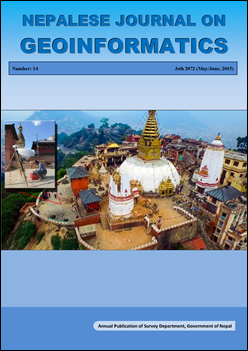Nigeria-Cameroon Border Demarcation at a Glance and Lessons Learned for Nepal
DOI:
https://doi.org/10.3126/njg.v14i0.16973Keywords:
Border demarcation, international land disputes and settlements, WGS84 system, geodetic network, Nigeria-Cameroon border demarcation, Indo-Nepal border, Sino-Nepal borderAbstract
The border demarcation between two countries usually takes place after wars or serious conflicts. Nigeria, which has the largest army in Africa, showed that it had a big heart when it reached an agreement with Cameroon as per the 2002 ICJ judgment without waging a war with its much smaller neighbor Cameroon. Although many Nigerians feel that Cameroon has gained a lot more than Nigeria, especially when Nigeria decided to hand over sovereignty of the 1000 sq-km oil-rich Bakassi peninsula to Cameroon, the Nigerian government is eager to make a closure of the boundary demarcation as per the 152-page ICJ judgment.
Ever since the demarcation activity started with a pilot project in 2005, many field missions have taken place with the mediation/facilitation of the United Nations, which has provided logistical and partial financial support and has brought in experts from all over the world.
The field demarcation along the land, river and ocean boundaries between Nigeria and Cameroon has mostly been completed, except for the final mapping and emplacement of boundary pillars along some sections of the border which are inaccessible or are marked ‘disagreement areas’. There are some serious security threats posed by Boko Haram in the disagreement areas in the north.
The best practices used in the Nigeria-Cameroon border demarcation are outlined below. Nepal could take some valuable lessons from the demarcation methods used by these two countries and maintain the political will to carry on the border demarcation works which can be technically and physically challenging and politically complex.
Nepalese Journal on Geoinformatics, Vol. 14, 2015, Page: 33-36




